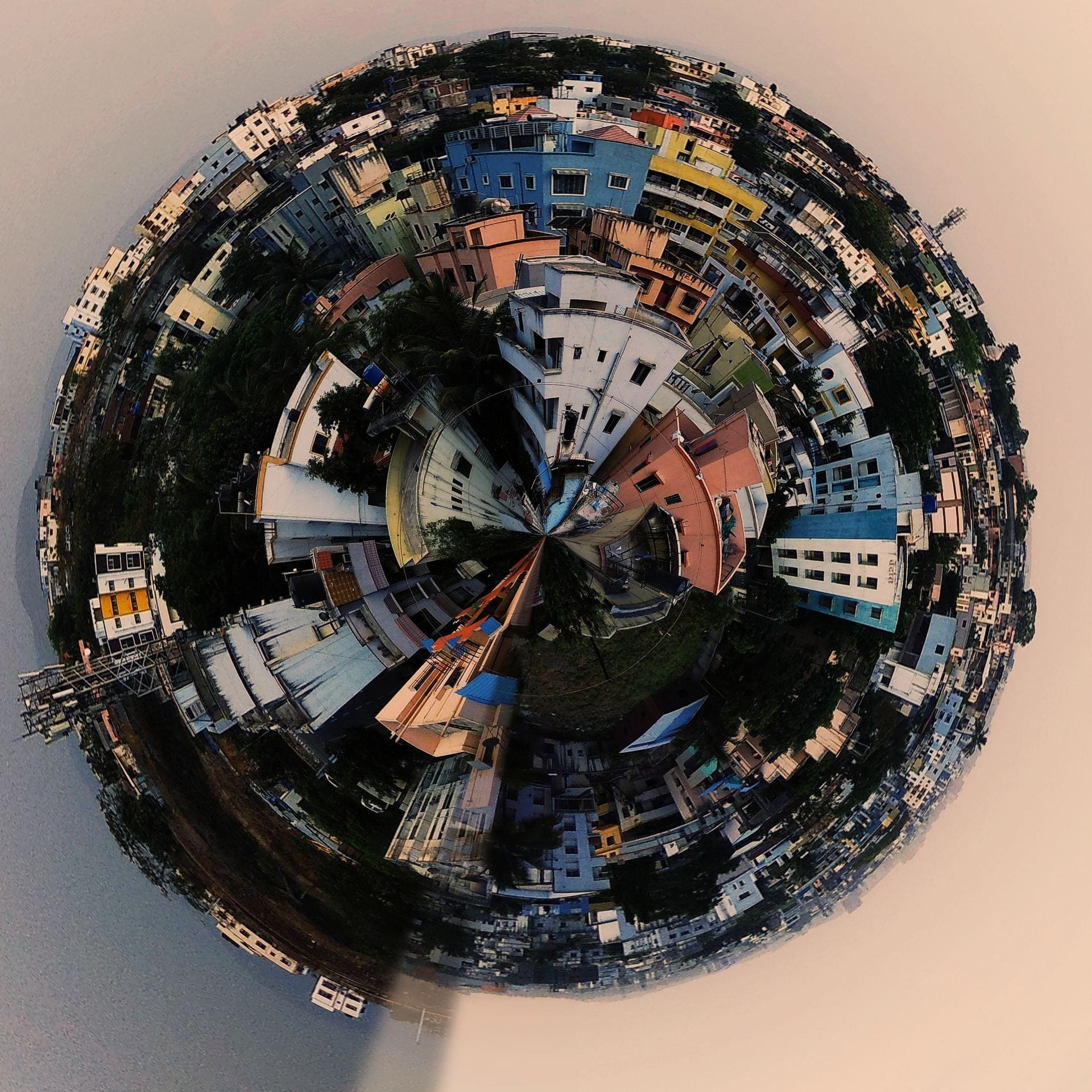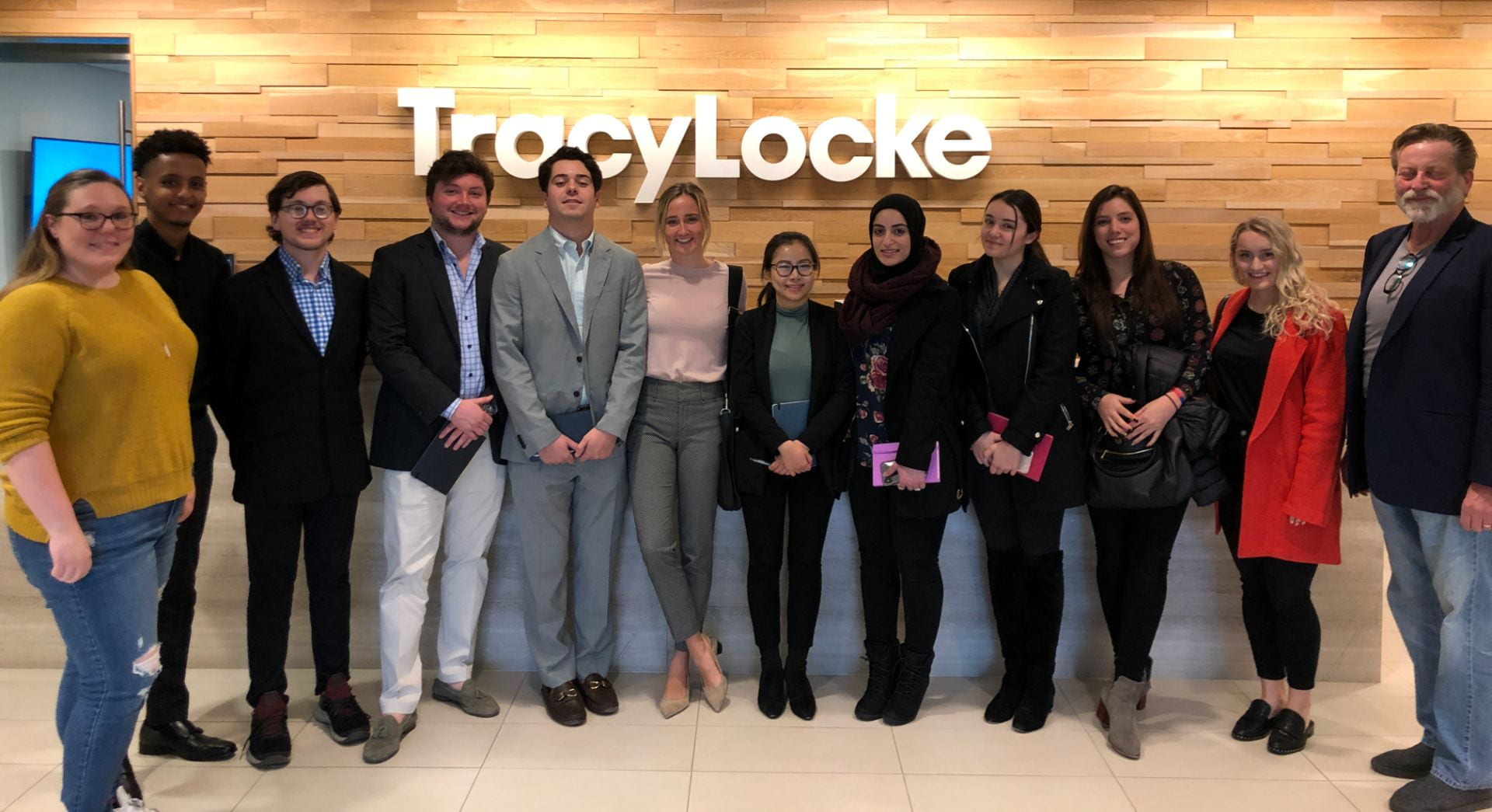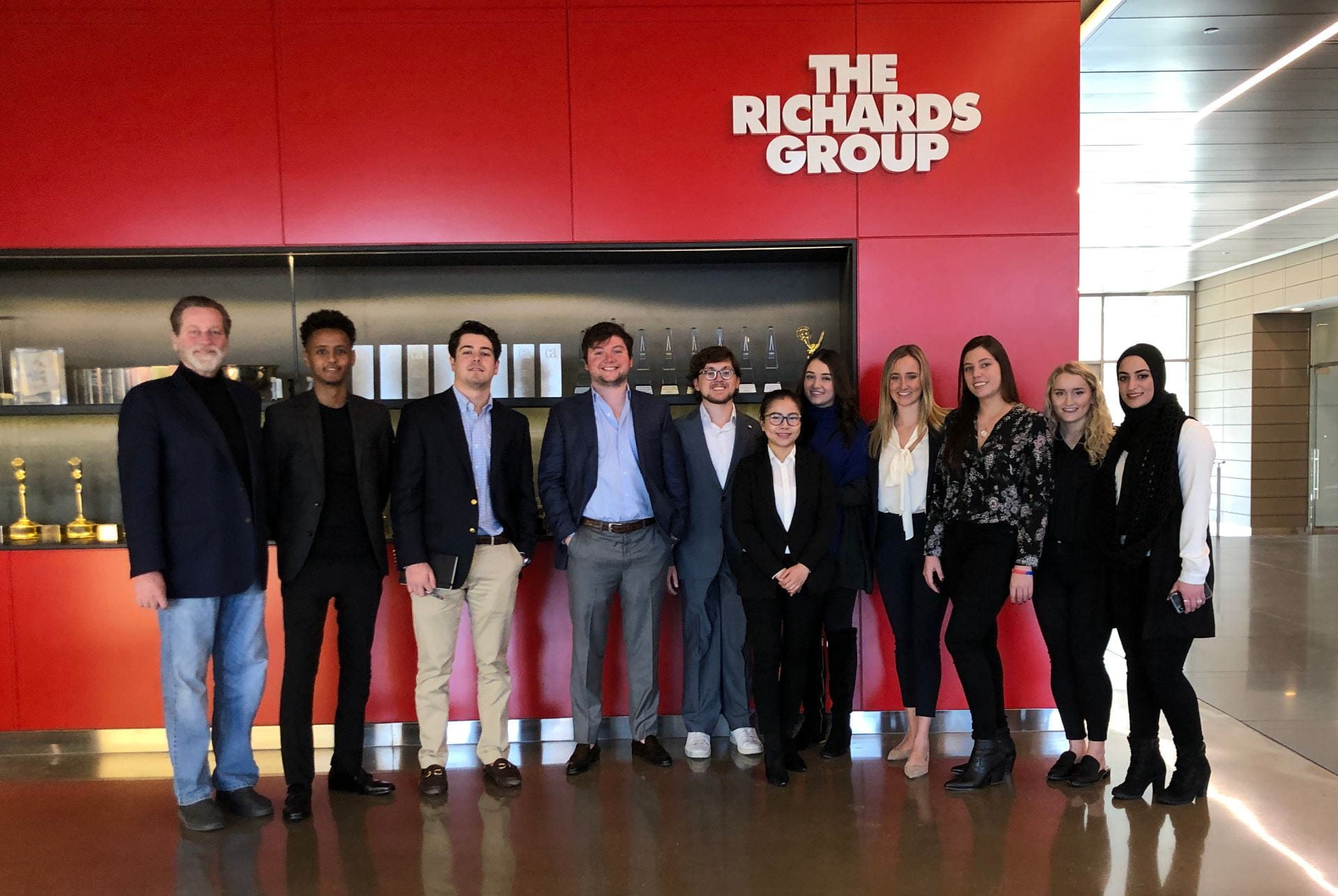Charlie Malekan and Claudia Iraheta from The Richards Group guest lectured in Gordon Law’s 3303 Advertising Media class on Thursday, January 23rd. In addition to sharing information about TRG with the students, they also shared their annual Media Trends presentation, summarized below.
Month: January 2020
Interview by Professor Mark Allen
Ask any advertising student (or professional) to name who’s on their career bucket list and most likely you’ll find Apple near the top. In the same league as brands like Nike, Volkswagen and Coke, the creative heavyweight from Cupertino consistently pumps out ads that are just as revolutionary as their products.
This September, Apple released its much-anticipated iPhone 11 Pro with a seriously beefed-up camera. To show off the device’s impressive new video capabilities, Apple asked TAI alumnus, Diego Contreras (’08), to create a short film for the official worldwide launch at the most recent Apple Keynote. With an iPhone 11 Pro and an extraordinary amount of talent, this is what he produced:
The new iPhone camera is incredible, no doubt. But one thing is even clearer to me: I still don’t expect my videos to look anywhere near this good—that is, unless Diego Contreras happens to be holding my iPhone.
I’ve kept up with Diego and his career ever since he was an art direction student of mine back in 2006–08. In addition to being a unique creative talent, he’s one of the kindest people you’ll ever meet. Whether it’s dinner when we find ourselves in the same city or giving advice to my advertising students via Skype, he always makes time in his busy schedule to catch up and give back.
One of my fondest memories of Diego was how he always found a way to have fun while working so hard. When he returned to our program as a senior, I asked him to lead our Fall Startup Meeting—our annual gathering of creative students after returning from summer break. Diego kicked off the event with a crazy video he shot and edited of him and a few other creative students wreaking havoc at a local grocery store on motorized carts. He even hosted a goofy awards show, featuring trophies that he made himself. He gave me the Vidal Sassoon Best Hair Award, made from an empty bottle of shampoo that he spray-painted gold. It was very much like Diego’s own version of The Dundie Awards. The point here is that Diego spent a ton of time creating a bunch of completely unnecessary content and made-up awards in order to foster a culture of fun and creativity around hard work. More than 10 years later, I still see the effects of Diego’s contribution to the culture of fun, hard work and camaraderie in our program.
Since graduating from SMU, Diego has worked for a truly impressive list of agencies. He started out as art director at Crispin, Porter + Bogusky in Boulder, then went to Anomaly in New York. He became an associate creative director at BBDO and then launched out on his own as a film and commercial director, currently working with Reset Content in LA. In light of his momentous project for Apple, I caught up with Diego and hit him with a barrage of questions:
SMU Advertising students spent their winter vacation exploring the Dallas Advertising Industry.
A special topics course led by Professor Peter Noble delved into current media, advertising agency structure, and agency work culture for six hours per day for eight days as part of SMU’s January Term. A group of select undergraduate and graduate students visited Dallas ad agencies including TracyLocke and The Richards Group to get a backstage tour of the agencies, network and get the insiders’ perspectives from presentations given by agency professionals themselves.
Many students participate in for-credit internships through the Temerlin Advertising Institute Internship Program. “Students are able to find their own internships, but many agencies actively seek out our students as they are ready to contribute from day one,” relayed Professor Noble.
Graduate student Munir Abdurahman describes the power of small courses at Temerlin: “The experience I had at Commerce House is something I’ll always remember about this course. After we toured the agency I spent some time talking to the person that gave us the tour. I asked her some questions about what her experience was like during her graduate career at SMU. Lauren mentioned that it was a wonderful experience and that she wouldn’t be where she is today without being in the program. She also mentioned that I should always network and be involved in the program as opportunities can come out of nowhere!”
SMU Advertising students have recently interned at:
Employers interested in hiring our students, please see the following information about the internship program.
Temerlin Advertising Institute faculty are studying ways to encourage bystander action when they encounter victims of domestic violence.  According to the CDC, “About 1 in 4 women and nearly 1 in 10 men have experienced contact sexual violence, physical violence, and/or stalking by an intimate partner during their lifetime.”
According to the CDC, “About 1 in 4 women and nearly 1 in 10 men have experienced contact sexual violence, physical violence, and/or stalking by an intimate partner during their lifetime.”
According to the research, bystander intervention is one way to help minimize occurrences of domestic violence. However, bystanders tend to be apathetic toward the victims they happen to encounter or observe.
In the research published in the Journal of Advertising, Dr. Carrie La Ferle and Dr. Sidharth Muralidharan examined the role of guilt and shame on attitude toward the ad and reporting intention of bystanders in India. While the effectiveness of negative emotions has been thoroughly researched in the West, conceptualizing guilt and shame from an Eastern perspective and using fluency in processing theory revealed that ads featuring emotional appeals strengthened reporting intention more than control ads did.
Professor Muralidharan explained that this action occurs through self-construals which impact the ways that the different emotions elicited are processed. Self-construal refers to the grounds of self-definition, and the extent to which the self is defined independently of others or interdependently with others and is thought to vary between Westerners and East Asians.
With respect to the findings, Dr. Muralidharan thought that it was interesting that shame was more effective than ads with guilt and the control. However, what was more intriguing was that ads with negative emotions (and lack of) were equally effective among those with an independent self-construal. Basically, such ad appeals were not as important as the duty to help a victim in need. A probable answer lies in research that touches on the characteristics of the independent self-construal (being assertive, autonomous, and possessing a stronger sense of equality), which could explain these gaps in future studies.
According to Dr. La Ferle, “We hope that this research will allow for more impactful public service announcements in India and further prosocial causes by encouraging people to take action in response to perceived needs.” This is one way SMU Advertising research is helping to create better advertising which leads to a better world.
For more information see:
Dr. Carrie La Ferle, Dr. Sid Muralidharan & Dr. Anna Kim “Using Guilt and Shame Appeals from an Eastern Perspective to Promote Bystander Intervention: A Study of Mitigating Domestic Violence in India” Journal of Advertising, 2019.


